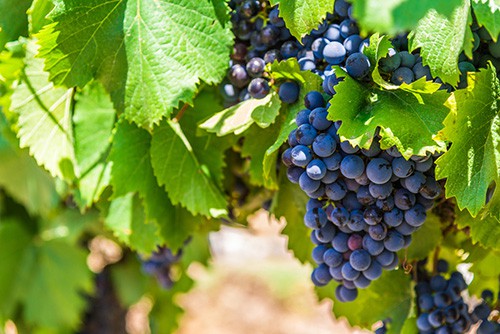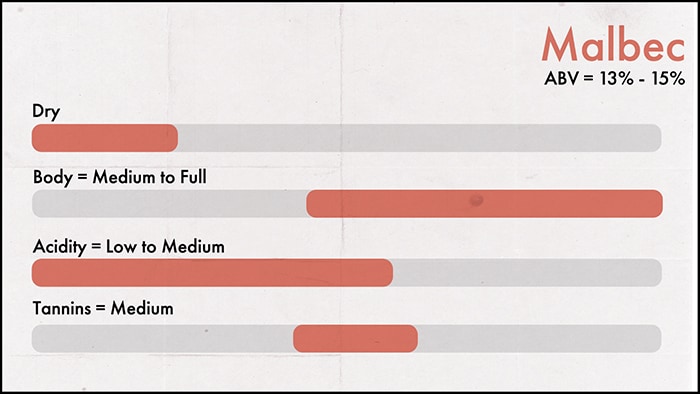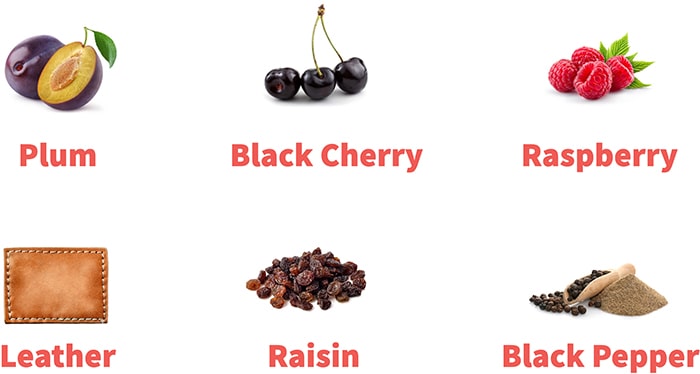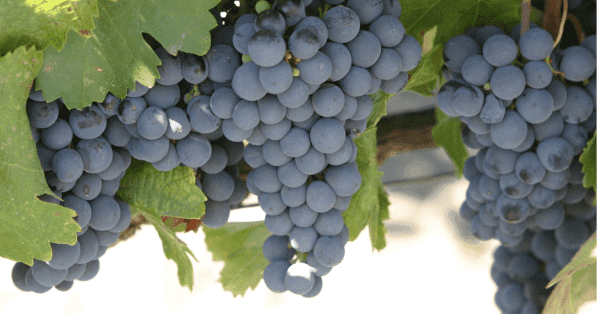Complete Guide to Malbec Wine | Wine 101

Argentinian Malbec's unstoppable rise in the last decade has made it one of the world's favorite red wines – not bad for a grape relegated by the French.
After a bad frost in 1956, the region of Bordeaux ditched the Malbec grape in favor of hardier varieties. Thankfully, Cahors in France continued the legacy, but we have Argentina to thank for around 70% of all Malbec production today.
Malbec is popular because it is approachable, with a medium to full body, medium tannins, and low-medium acidity with a black fruit profile.
These traits make it popular at the dinner table and great for sipping.
This guide covers everything you need to know about Malbec, from the grape's origins to tasting notes and wines to try.
Characteristics of Malbec

Malbec is a medium to full-bodied red wine with an inky, deep purple color and a juicy, fruit-forward palate with spice and tobacco notes.
Blackberry, plum, and black cherry flavors dominate the palate, with undertones of leather and cocoa with extended oak aging.
Medium to low acidity, moderate tannins, and a smooth, velvety mouthfeel make Malbec an excellent option for wine beginners and enthusiasts looking for something to sip. You can expect a 13 - 15% ABV and an approachable profile.
Because the Malbec grape is small and thick-skinned, it produces a wine with intense fruity flavors and more alcohol than Merlot or Pinot Noir.

Malbec is an attractive red wine because, although dry, it contains around 1.5g of residual sugar, making it sweeter than Merlot and Pinot Noir (which have less than 0.5g). However, the sweetness is offset by a round tannin profile, giving it a balanced profile.
Unlike Cabernet Sauvignon and Merlot, Malbec doesn't need oak aging to intensify its fruitiness. Many of the finest Malbecs are aged for around six months, after which the wine takes on more bitter notes.
You can usually distinguish a Malbec through its nose, with most varieties having a rich dark fruit aroma with a prune/fig undertone.
Malbec Tasting Notes

Malbec grows well in cool and warm climates, and you can expect different tasting notes depending on the wine's region. Warm-climate grapes have more sugar, which means a fruitier, fuller varietal.
Warm climate Malbec has copious blackberry, plum, and cherry flavors, with pepper, tobacco, and leather aromas.
The dark fruit notes are intense, making the wine perfect for blending with grapes with red fruit notes. Another characteristic of warm-climate Malbec is fig aromas, which introduce a richness perfect for pairing with chocolate.
Cool climate Malbec has more acidity and a more mineral tone, with lighter flavors of black fruit and a slathering of red fruit. An undertone of graphite and vanilla gives the wine a bold profile. On the nose, a touch of clove and herbs.
If you enjoy full-bodied wines, warm climate Malbec is best – cool climate Malbec is lighter, although the tannins are very similar.



How is Malbec Served?
Malbec is served at room temperature (60–68°F / 15-20°C), benefitting from a serving temperature at the lower end of the scale – this preserves the smooth tannins and fruity profile without highlighting smoky notes.
You should serve Malbec in a standard wine glass, and it’s best to decant it or leave the bottle open for 30 minutes before serving. Airing helps shrug off the bitter notes that cool climate Malbec is known for.
Those who enjoy aging wine in the bottle can store Malbec for up to ten years, with aging bringing out more tannins and darkening the color.
However, Malbec is a robust wine that you can serve without much thought other than letting it get up to room temperature. This makes it perfect for the dinner table, especially alongside red meat, roasted dishes, and strong cheeses.

The Malbec Grape
The Malbec grape originates from France, with records showing it growing in the Loire Valley of Bordeaux as early as the 16th century. It was named “Auxerrois” then, and many wine producers in France today call it cot (or côt).
Malbec was one of the most popular red wines in its heyday, a particular favorite of the French aristocracy. However, the grape’s tendency to ripen early in wet and cold weather made it problematic to cultivate in many regions.
As such, Malbec was relegated in much of France in favor of hardier grapes like Merlot. Malbec almost disappeared from Bordeaux in the 19th century, and today, it makes up only around 1% of Bordeaux’s grapes.
Today, Argentina is the world’s largest producer of Malbec wines, with around 70% of vineyards. Argentina has ample sunshine and a dry climate, letting the Malbec grape grow plump and juicy across a long growing season.
Notable Regions for Malbec
Mendoza, Argentina
Mendoza is the leading region in Argentina for Malbec, with the subtropical climate, poor soil, great irrigation system, and hot summers producing world-class grapes. No region can match Mendoza for the quality of its Malbec.
Malbecs from this region are medium to full bodied (leaning on full) with moderate acidity and bright dark fruit notes.
The wine is usually aged for around six months in stainless steel, oak, or half and half. Oak aging intensifies tobacco, licorice, and fig notes, giving the wine extra richness.
Cahors, France
More Malbec is grown in the commune of Cahors than anywhere else in France, with small vineyards producing fine vintages. Cahors is an Appellation d'origine contrôlée (AOC), which makes it a revered wine producing region.
Malbec from this region introduces notes of red fruit and ripe raspberries, giving it a fresher profile than Mendoza's. It is usually aged longer than Argentinian varieties, spending 12-14 months in oak which softens and rounds the tannins.
Walla Walla, Washington, USA
Washington is an unlikely source of Malbec, but Malbec has steadily climbed the state's grape production chart since 2010. Today, it is one of the top five grapes in Washington, and the world can't get enough of it.
Washington Malbec is deep violet, with notes of blueberries, violets, and spices, giving it a decadent profile. The floral profile is unlike France's or Argentina's Malbec, with Walla Walla's microclimate producing juicy, large grapes.
Malbec Food Pairings
Malbec pairs exceptionally well with lean cuts of meat because it is moderately acidic and dry but fruity. The moderate tannins do not cut through fat well, so you should avoid dishes like prime rib, ribeye steak, and pork belly.
Instead, pair Malbec with dark meat poultry, sirloin, hanger steak, and venison. The fruity notes also lend themselves well to burgers and pizza – this is a wine you can open alongside your pizza delivery without worrying about it clashing.
Our favorite dish pairings include meat and cheese plates, chicken enchiladas, baba ganoush, grilled sausages, and butter bean and chorizo stew.
If you choose an oaky and smoky Malbec, pair it with lighter meats and buttery dishes like garlic butter steak bites. Oaky Malbec goes brilliantly with garlic, coriander, and onion, but it clashes with spicy foods like Vindaloo and Rishta.
You can also serve Malbec wine as an aperitif to cheesy and savory appetizers because the fruit-forward profile helps balance saltiness.
Don't miss our ultimate guide on food to pair with Malbec for more ideas.
3 Delicious Malbec Wines to Try
If reading this has made you thirsty from some Malbec, you can't go wrong with one of these!
1. Under $15 - Alamos 2020, Mendoza, Argentina

Alamos 2020 is a rich dark fruit hit with intense blackberry, plum, and black cherry notes. The bouquet has an undertone of oak and chocolate, with a hint of tobacco after decanting. Perfect with burgers and pizza.
The Alamos winery has more than 100 years of winemaking history, producing many of the Mendoza region's finest affordable Malbecs.
2. Under $30 - Tapiz Alta Collection 2018, Mendoza, Argentina

Tapiz Alta Collection 2018 is smoother and less tannic than Alamos 2020, making it perfect for beginners. Dark fruit dominates the palate, with hints of earth and graphite, and aging is in new and old French and American oak barrels.
The Tapiz winery has one of the highest vineyards in Mendoza at 4,600 feet above sea level, with grapes benefiting from increased exposure to the sun.
3. Under $100 - Catena Zapata Nicasia Vineyard 2018, Mendoza, Argentina

Special occasions are a dream with Catena Zapata Nicasia Vineyard 2018. This decadent Malbec is one of the finest in the world, with rich notes of vanilla, oak, and cocoa with an underpinning of blackberry, plum, and cherry.
Bodega Catena Zapata is a family-owned winery operating vineyards in the cool areas of Mendoza for long-season harvests.
3 Fun Facts About Malbec
Let's finish with some interesting facts to impress your friends with!
1. Bordeaux ditched the grape after a bad frost
Malbec was thriving in Bordeaux, France, until a bad frost in 1956 destroyed the year's harvest. The grape's weakness to frost led to Bordeaux ditching it, although it survived as a core grape in Cahors, 160km east of Bordeaux.
2. 70% of grapes in Argentina are Malbec
Malbec is the most successful grape in Argentina, accounting for around 70% of plantations. Mendoza is the main growing region, whose arid, subtropical climate and high altitudes provide ideal growing conditions.
3. Malbec cultivation is notoriously challenging
The Malbec grape hates frost and is susceptible to rot when exposed to wild fluctuations in temperature. It requires a stable climate with lots of sunshine, which is why arid regions like Mendoza in Argentina are perfect.
